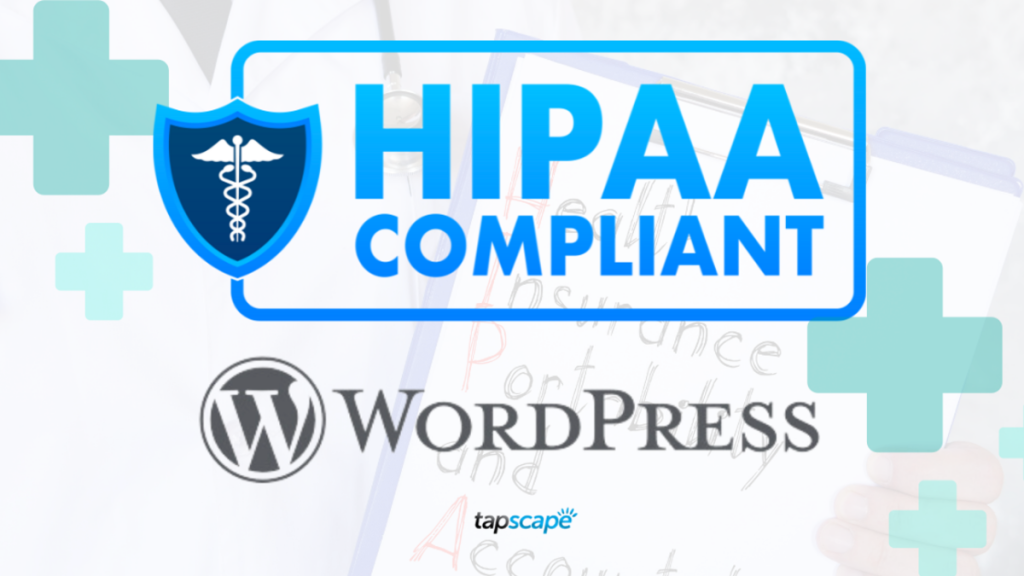As healthcare providers increasingly recognize the importance of digital presence, many turn to WordPress for its ease of use and flexibility. This guide will explore how to ensure HIPAA compliance on WordPress, safeguarding patient data while preserving the website’s look and feel.
Understanding HIPAA and Its Implications for Websites
Contents
The Health Insurance Portability and Accountability Act (HIPAA) sets rigorous standards for protecting sensitive patient data. Any platform or tool that handles protected health information (PHI) must comply with these standards. This includes healthcare websites that manage patient records, intake forms, appointment scheduling, and other sensitive patient data.
HIPAA compliance involves adhering to several key requirements:
Privacy Rule: Establishes national standards to protect individuals’ medical records and other personal health information.
Security Rule: Sets standards for securing electronic protected health information (ePHI).
Breach Notification Rule: Requires covered entities and their business associates to provide notifications following a breach of unsecured PHI.
Why Choose WordPress?
WordPress is popular among websites due to its user-friendly nature and extensive range of plugins and customization options. Even though WordPress itself is not HIPAA-compliant, it offers plugins and add-ons that can help create HIPAA-compliant forms and documents. Typically, informational parts of the website like clinic descriptions, doctor bios, hours of operation, and services do not need to be HIPAA-compliant as they do not contain PHI. HIPAA compliance is essential for areas involving patient intake forms, consents, and other online forms containing personal data and health conditions. For instance, a patient’s first name, last name, and symptoms are considered PHI when submitted through an online contact form.
Steps to Make Your WordPress Site HIPAA-Compliant
Achieving HIPAA compliance on a WordPress website involves several steps:
SSL Certificates
Secure Sockets Layer (SSL) certificates are essential for encrypting data transferred between the user and the website. This encryption prevents unauthorized access and ensures data integrity, making every page of your website accessible through HTTPS is crucial for HIPAA compliance.
- Encryption: SSL encrypts sensitive information, making it unreadable to unauthorized users.
- Trust: Visitors trust websites that display the padlock symbol, indicating SSL protection.
HIPAA-Compliant Plugins
Select plugins designed to be HIPAA-compliant, especially if your website requires patient intake forms. Opt for solutions like HIPAA-compliant intake forms that ensure all collected data meets HIPAA standards.
- Data Collection: Plugins should ensure encryption and secure data storage.
- Compatibility: They should work easily with other HIPAA-compliant tools.
Access Control
Implement strict access controls to ensure only authorized personnel can access sensitive patient data. This includes enforcing strong password policies and two-factor authentication (2FA).
- User Roles and Permissions: Assign roles and permissions to limit access to PHI.
- Two-Factor Authentication: Adds an additional layer of security beyond just passwords.
Data Encryption
Ensure that any stored PHI is encrypted both at rest and in transit. Encryption is crucial to protect against data breaches and ensure that sensitive information remains secure.
- At Rest: Encryption of stored data to prevent unauthorized access.
- In Transit: Encryption of data being transferred over the internet.
Regular Audits & Monitoring
Regular security audits and continuous monitoring for vulnerabilities are crucial to staying proactive and mitigating risks before they escalate into breaches.
- Vulnerability Scanning: Regularly scan your website for potential security weaknesses.
- Compliance Audits: Periodically review your site’s compliance status to ensure ongoing adherence to HIPAA regulations.
Implementing HIPAA Compliance on WordPress
Healthcare providers looking to meet HIPAA compliance standards using WordPress might initially face challenges with ensuring data security and compliance. However, these challenges can be effectively addressed by adopting a structured approach:
- Selecting a HIPAA-Compliant Hosting Service: Choosing a hosting provider that offers HIPAA-compliant services ensures that the website’s infrastructure meets the necessary security standards. However, this solution can be expensive for small websites. Also HIPAA hosting requires constant monitoring that increases website support cost.
- Implementing SSL Certificates: Utilizing SSL certificates encrypts all data transactions on the website, providing an essential layer of protection against unauthorized access.
- Integrating HIPAA-Compliant Plugins: Using specialized plugins provides a secure and compliant way to collect patient information.
- Enforcing Strict User Authentication Protocols: Implementing robust user authentication protocols, including strong password policies and two-factor authentication, ensures that only authorized personnel can access sensitive patient data.
- Encrypting Data Storage: Ensuring that all PHI is encrypted both at rest and in transit adds another essential layer of security to protect against potential data breaches.
Maintaining HIPAA compliance on a WordPress site is not as complex as it may seem. By implementing steps such as utilizing HIPAA-compliant plugins, ensuring data encryption, and conducting regular audits, you can make your WordPress website compliant. While WordPress on its own is not inherently HIPAA compliant, using tools like WordPress HIPAA-compliant forms can help achieve the necessary compliance for handling patient information.

